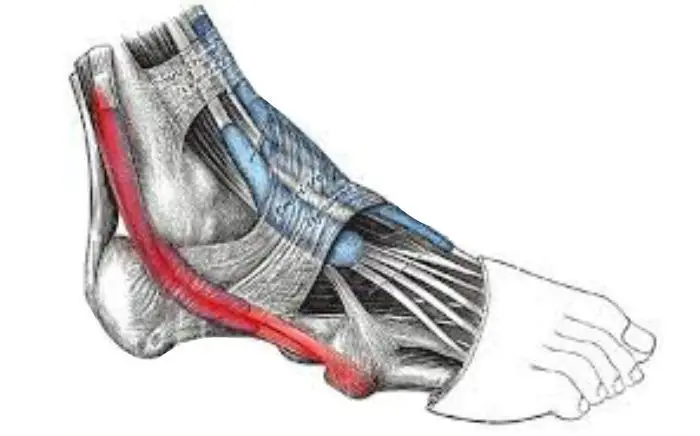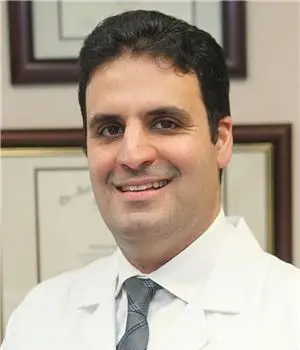PERONEAL TENDONITIS
What is Peroneal Tendonitis?
Peroneal tendonitis is a condition in which the peroneal tendons — located along the outer side of the ankle and foot — become inflamed due to overuse or repetitive strain. These tendons help stabilize the ankle and foot, especially during walking, running, or side-to-side motion.
At SoCal Foot and Ankle Doctors, with offices in Santa Monica and at the Cedars-Sinai Medical Towers, we diagnose and treat peroneal tendonitis using a combination of biomechanical correction, advanced therapies, and, when necessary, minimally invasive procedures.

What Causes Peroneal Tendonitis?
Peroneal tendonitis is typically the result of repetitive stress that causes the tendons to rub excessively against the bone, leading to irritation, swelling, and micro-tears.
Common Causes and Risk Factors:
- Overuse from running, jumping, or high-impact sports
- Poor foot mechanics, including high arches or supination (outward foot rolling)
- Improper footwear
- Sudden increase in activity level
- Previous ankle sprains or instability
- Tight calf muscles
Over time, the tendons may thicken or scar as they attempt to manage increased load, resulting in chronic inflammation or degeneration if not properly treated.
Symptoms of Peroneal Tendonitis
- Pain along the outer ankle or side of the foot
- Swelling and tenderness behind or below the ankle bone
- Pain that worsens with activity, especially running or walking on uneven ground
- Ankle instability or a sensation of weakness
Pain during ankle eversion (turning foot outward)
Diagnosis of Peroneal Tendonitis
At SoCal Foot and Ankle Doctors, we perform a comprehensive clinical evaluation, which may include:
- Physical exam and palpation of the peroneal tendons
- Gait analysis and biomechanical assessment
- Ultrasound imaging to visualize tendon inflammation or tears
- MRI for chronic or complex cases
Peroneal Tendonitis Treatment in Santa Monica & Cedars-Sinai
Conservative Treatment:
- Rest and activity modification
- Ankle bracing or taping
- Cold therapy to reduce swelling
- Anti-inflammatory medications
- Custom orthotics to correct foot mechanics
- Physical therapy for strengthening and flexibility
Advanced & Regenerative Therapies:
We offer cutting-edge, non-surgical treatments to help accelerate healing and reduce pain:
- Platelet-Rich Plasma (PRP) injections – to promote tendon repair at the cellular level
- Fetal tissue allograft injections – used for chronic inflammation or degeneration
- Amniotic stem cell injections – to reduce inflammation and support healing
- Extracorporeal Shockwave Therapy (ESWT) – stimulates healing in damaged tendon tissue
- Ultrasound-guided tenotomy – minimally invasive removal of scar tissue
When Is Surgery Needed?
Surgical treatment is rarely required but may be necessary for:
- Tendon tears or rupture
- Chronic pain unresponsive to conservative care
- Instability from peroneal tendon subluxation
Surgery may involve debridement, tendon repair, or groove deepening to prevent the tendon from snapping over the bone.
Don’t Ignore Outer Ankle Pain
If you’re dealing with lingering ankle pain or swelling, especially on the outside of the foot, don’t push through the pain. Early treatment of peroneal tendonitis prevents long-term damage and keeps you active.
Contact SoCal Foot and Ankle Doctors today to schedule a consultation at our Santa Monica or Cedars-Sinai location.
Our Docters
Our Board Certified Podiatrists
Socal Foot and Ankle doctors are committed to delivering the most exceptional treatments.

Board Certified Foot & Ankle Specialist
Office Time
Location: Santa Monica
Mon – Thur: 9:00 AM – 5:00 PM
Friday: 9:00 AM – 5:00 PM

Board Certified Foot & Ankle Specialist
Office Time
Location: Santa Monica
Mon – Thur: 9:00 AM – 5:00 PM
Friday: 9:00 AM – 5:00 PM
Request Appointment
NON-INVASIVE ADVANCED TREATMENT
BOARD CERTIFIED
FOOT & ANKLE
Surgeons
Years Experience
Happy Patients
Location
Local Partners
